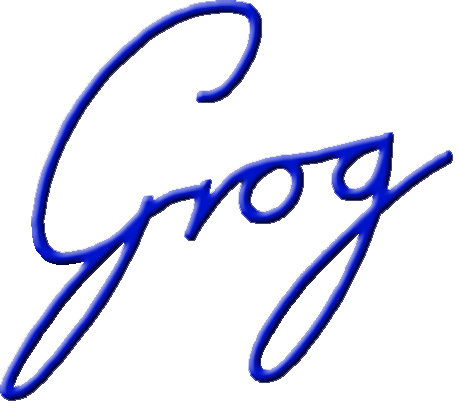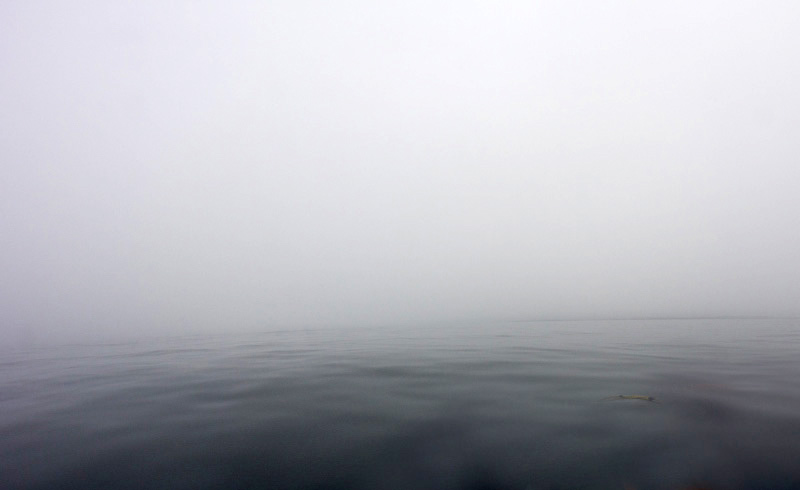To France and Back. Three friends and I sailed the family ketch Sonia to France. We went from Dover to Calais and back again and then, because it went so well, we did it again. Four days – four crossings. On the final day the weather was so great we remembered Father’s injunction to varnish the cockpit if the weather permitted. Well, the weather was ideal: cloudless sky, warm sun and gentle breeze. We applied varnish all around the teak cockpit, moving carefully as we did. We completed the job and the varnish was all dry as we approached Dover’s White Cliffs. They looked especially striking because there was line of white clouds on the distant horizon. The wind was behind us and we paid little attention to the white line, confident that the wind, our wind, would be blowing the clouds away. We were closing fast on the entrance and the safety of Dover Harbour.
The Fog Bank. As we got closer we became aware that the low white clouds were actually fog. Far from receding, it grew much darker and was actually approaching us quite fast. We were in a race: we might not reach the entrance to Dover Harbour before the fog enveloped us. All four of felt anxious as we stowed the sails and had the engine running fast aiming straight between the massive Harbour walls.
The Growing Storm. When we were still about two hundred yards away a bullhorn voice gave us a loud order: “Blue ketch, stand clear of the Harbour and head back out to sea.” The loud order was repeated several times as the dense fog shrouded both of the Harbour walls, us, and presumably the harbourmaster. Because we couldn’t see either wall, we assumed that he couldn’t see us either. We maintained a steady course and headed in to the Harbour. For ten minutes we proceeded slowly under engine in a straight line and then dropped the anchor and settled down to rest. During the evening the fog cleared and the wind began to strengthen. There were, however, no other boats close to us and we settled for the night.
Early next morning we realized we were in a severe storm. We let out the anchor chain to its full length and then found the kedge (spare) anchor. We tried to motor forwards to lower the kedge somewhere near the main anchor but the wind was too strong. We just lowered the second anchor beside us and it soon pulled tight as we were dragging our main anchor. As the wind continued to strengthen we tried to reduce windage. We took the sails off the spars and stowed them. We also kept the engine running to take some of the load off the anchor.
A Hurricane. Late in the morning a Royal National Lifeboat Institution (RNLI) lifeboat came alongside and asked if we wanted to be rescued. We answered that we thought we were in good shape. The lifeboat skipper looked very relieved and explained that they had just received a call to head out to sea for a rescue. After they left us the wind continued to rise and we wished we had accepted their offer. We found out later that the Harbour instruments had recorded wind speeds of 91 mph (79 knots) – a Category 1 hurricane. The normal line between water and air was no more – it was hard to tell where sea and air were separated. The upper layers filled the open cockpit with water and thus the hull below. The lifeboat returned in about an hour and this time we carefully made the transfer into their welcoming arms. When we left her, both anchors appeared to be holding and the engine was running.
Even as we arrived ashore the wind began to ease and we walked along the Harbour to inspect the damage. We had been very lucky. Four boats about our size or smaller had been smashed into small pieces. However, the feeling of good fortune diminished when were taken back on board. Sonia was partially filled with water – sufficient to float all of the oil out of the engine’s crank-casing. A thick film of oil coated the entire interior and would do so for months even after repeated cleaning.
Only some sixty five years later was I reminded that younger brother Andrew was at school in Dover. He had watched us arrive and had also participated in the clean-up.
Cleaning Up. Mother and Father had planned to spend a week on the boat after us. They did – but not in the way they intended: they cleaned non-stop for a week. Tinned food was normally kept under the cabin floorboards. The tins had become coated with oil and, worse, their labels had all soaked off in the water: the food remained edible but what would be on a menu would come as a surprise for months. The labels had all turned into an oily pulp and this would choke up the bilge pump – again for months. Drained of water and refilled with oil, the engine did come back to life. The kedge anchor and its anchor rode were never seen again. The main anchor, a CQR, was intact but remarkably bent. Presumably it had got caught in a rock and that was why it held.
Sonia had survived and had, once more, added to our family store of legends. She stayed in the family for about another five years. However, I suspect that this experience had planted in Father’s mind a desire for something more modern as well as easier to maintain and handle – his beloved Callegro.

Alan Grogono





